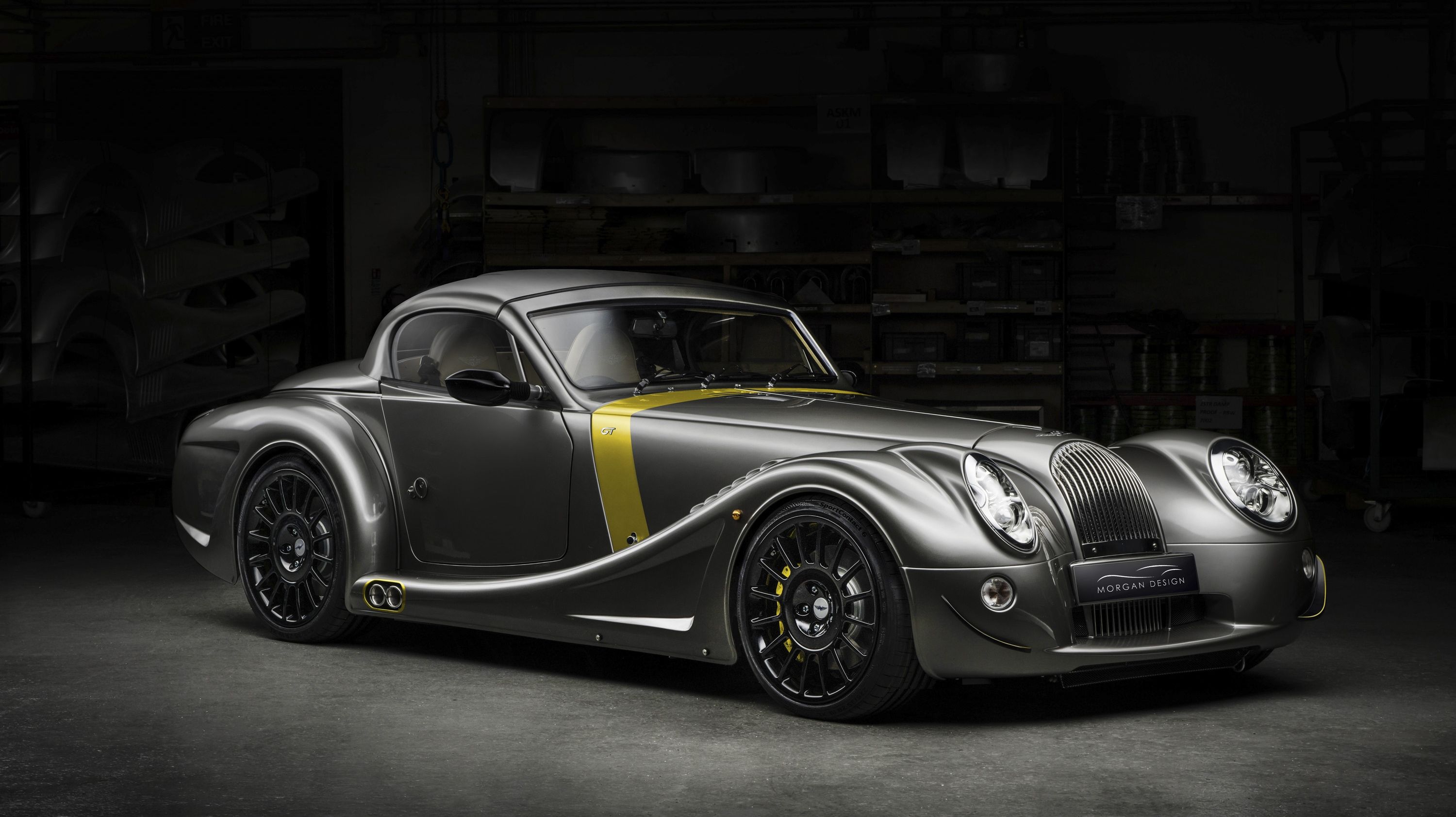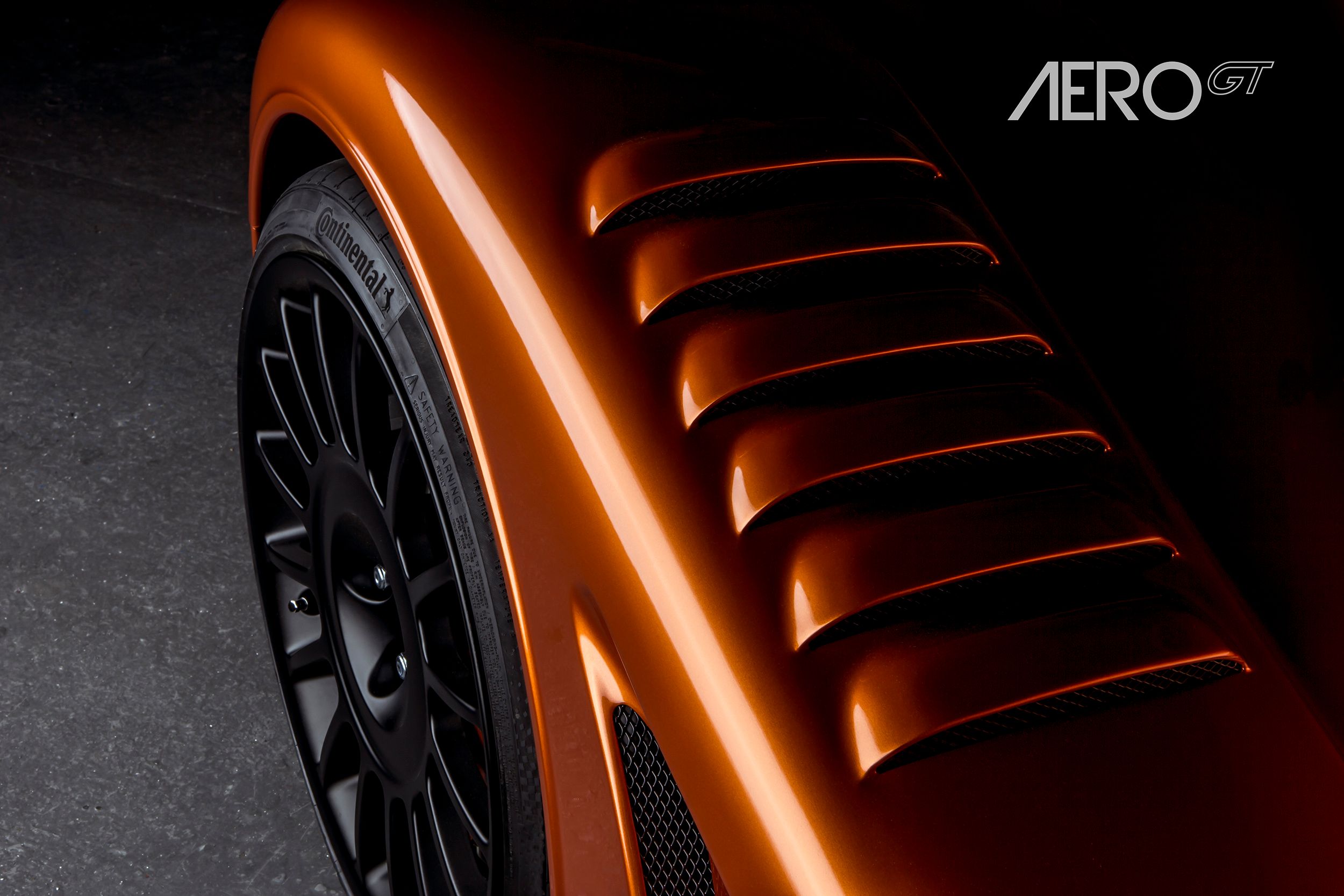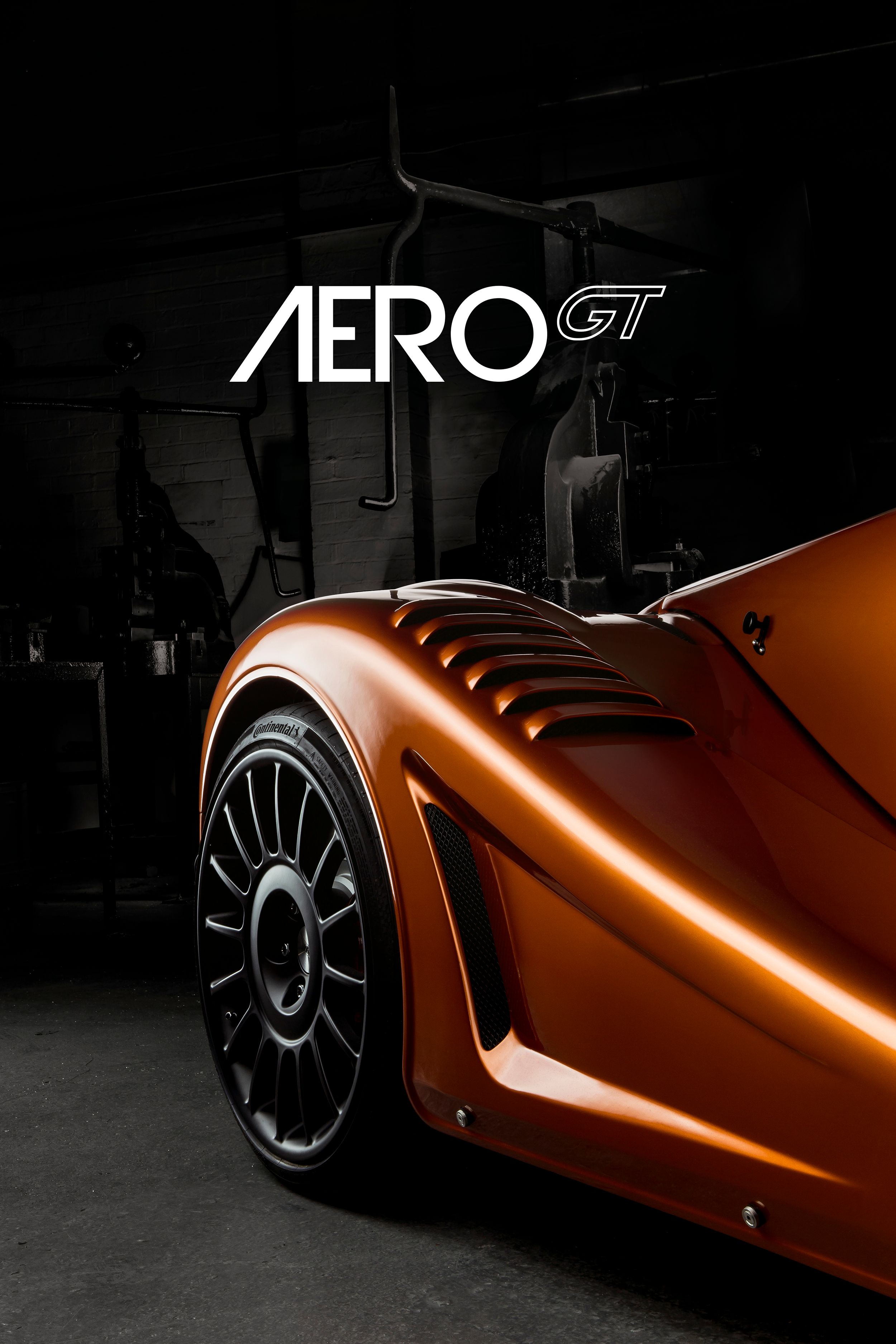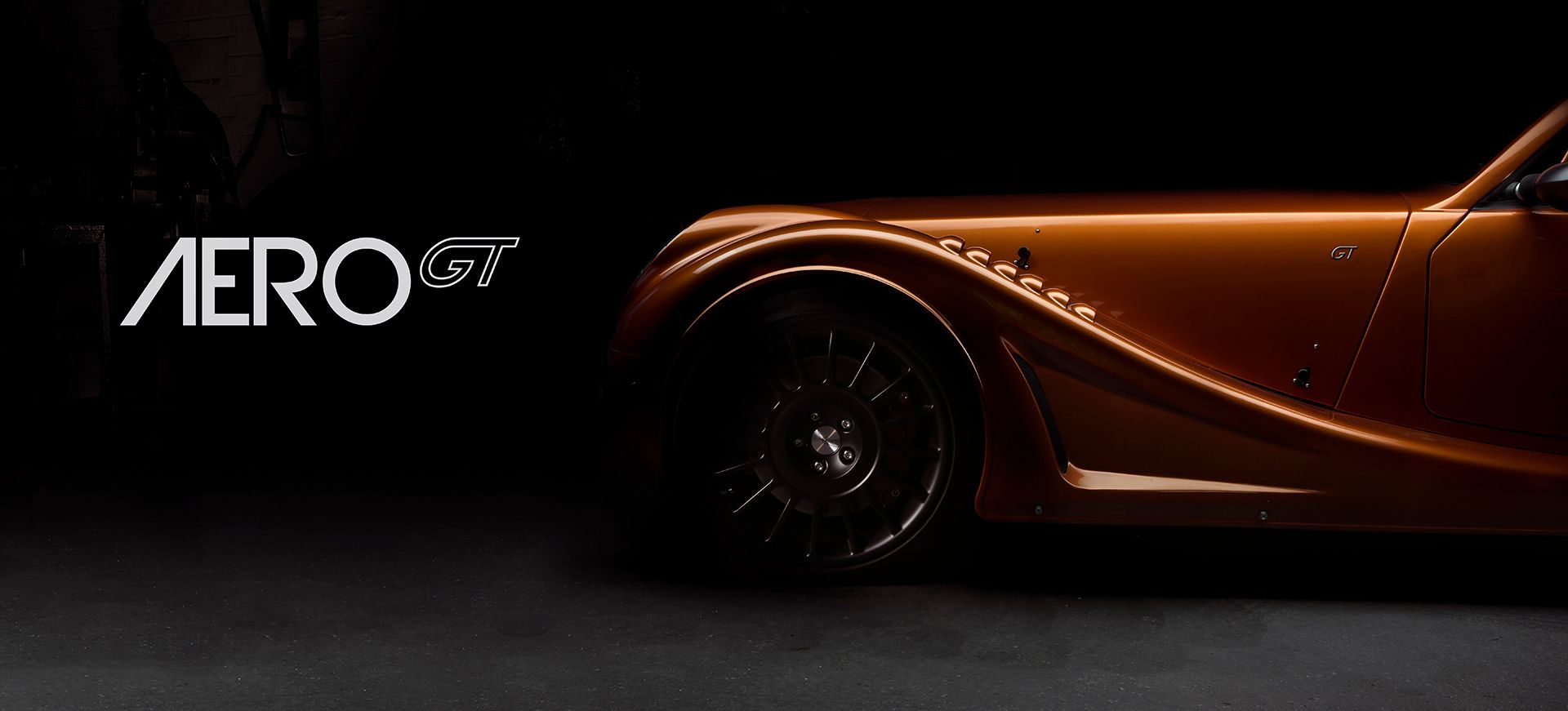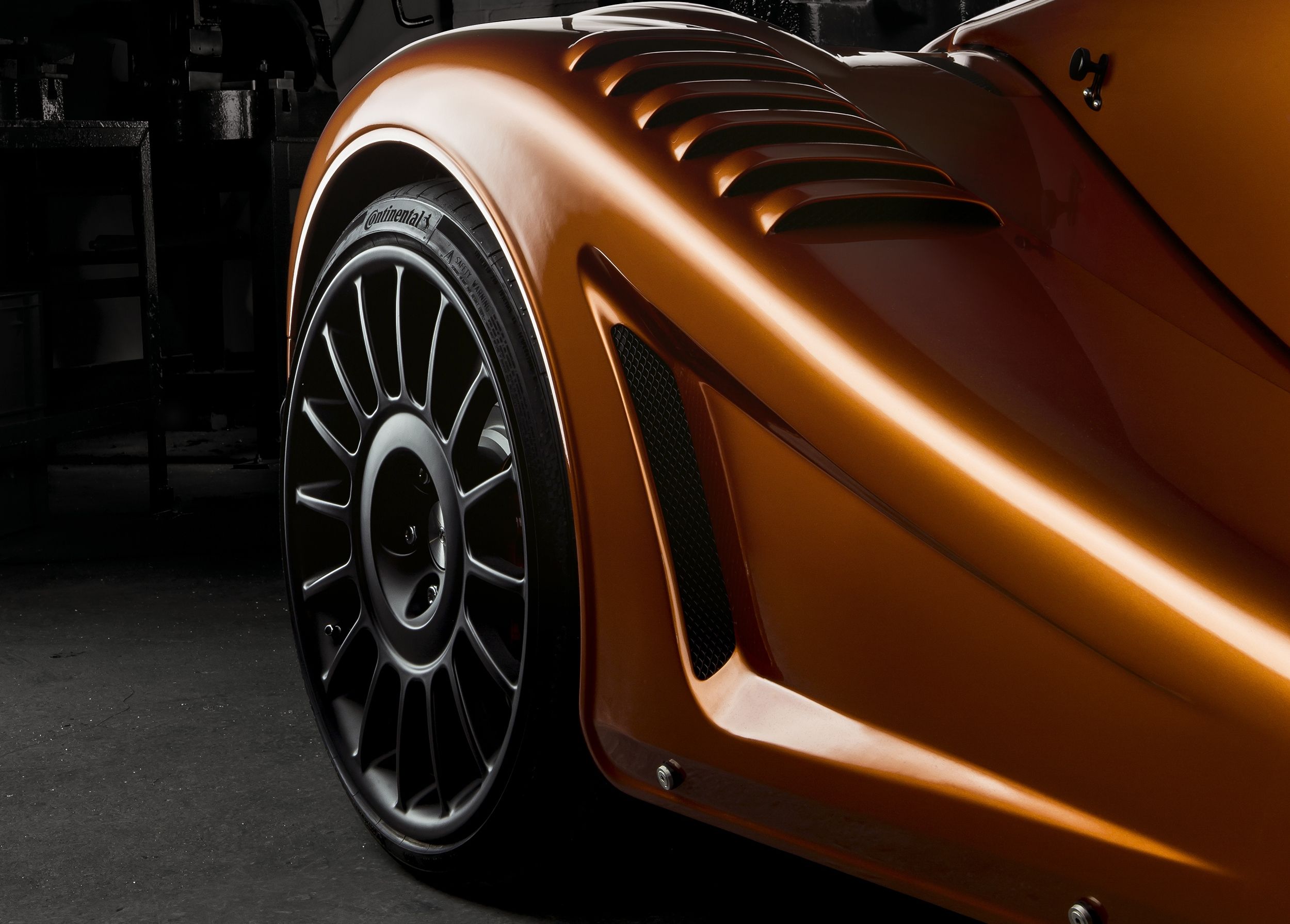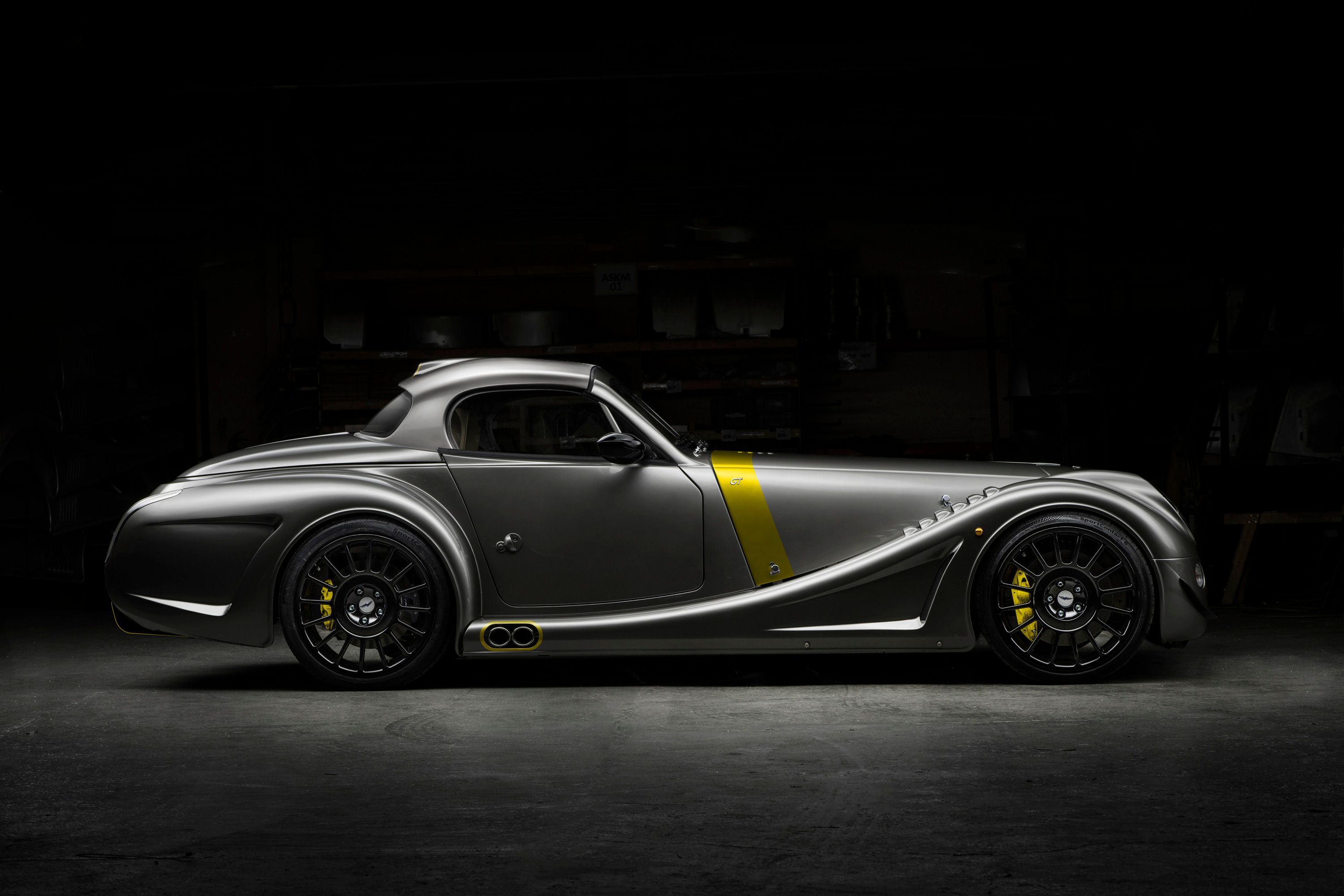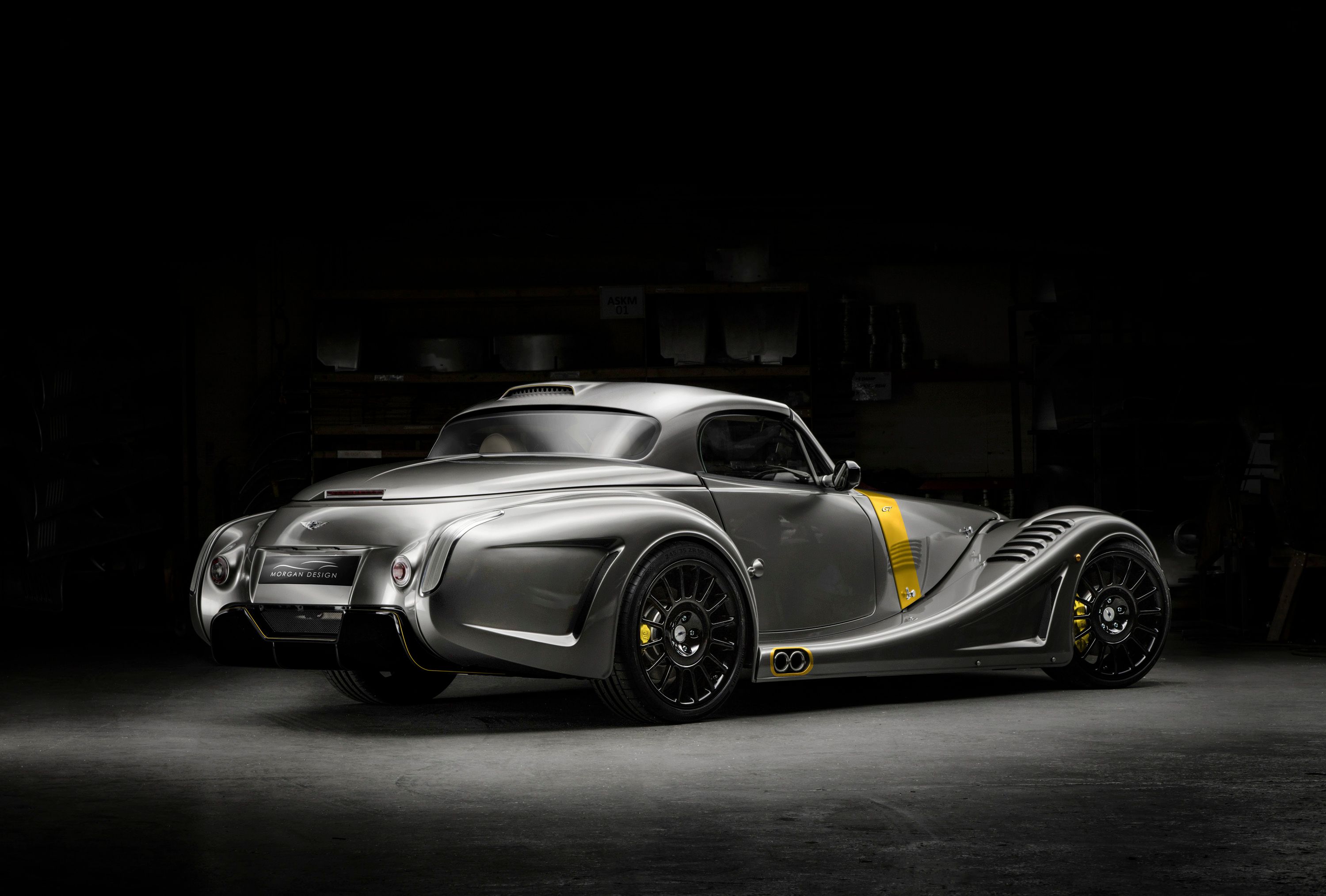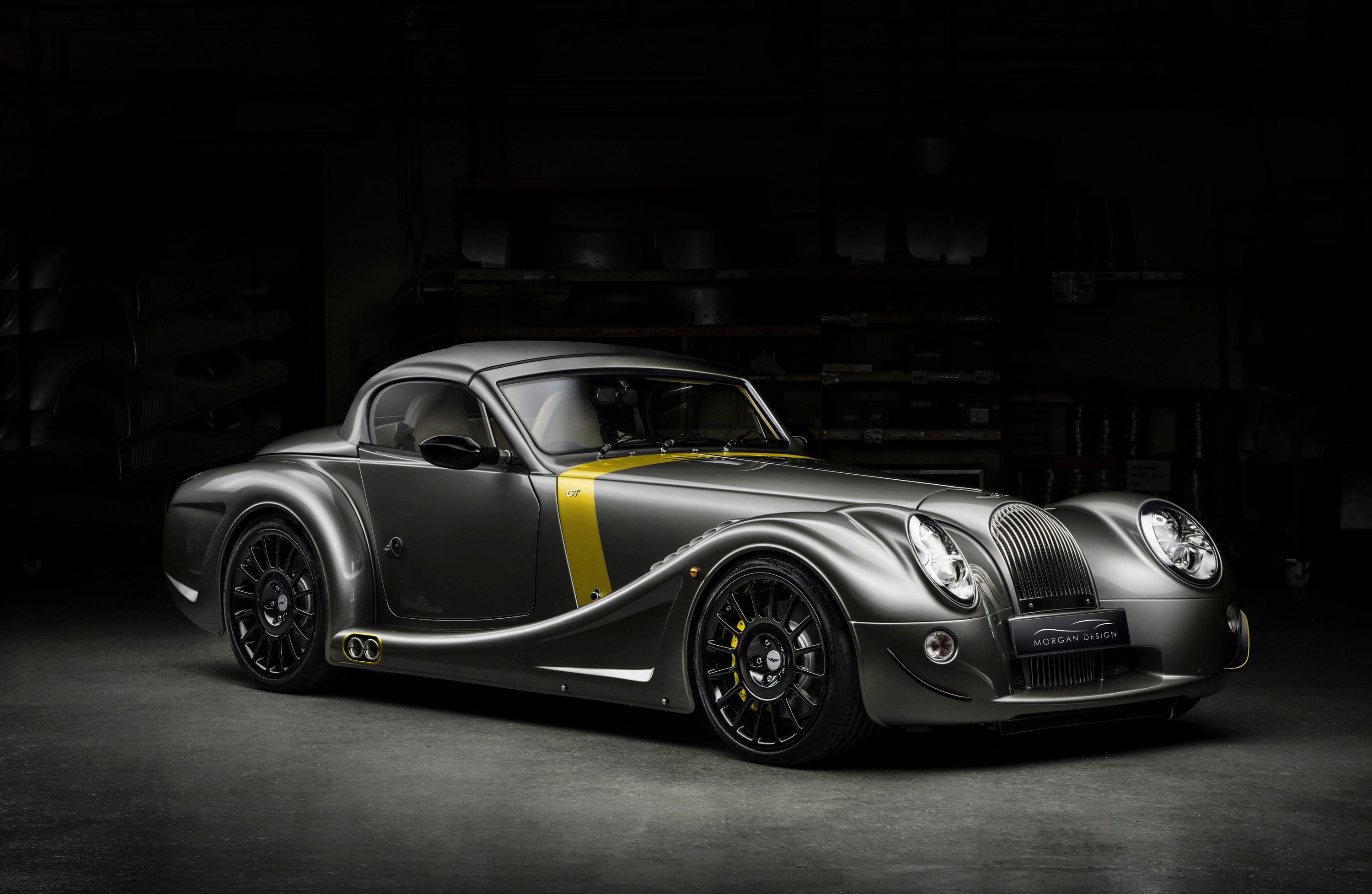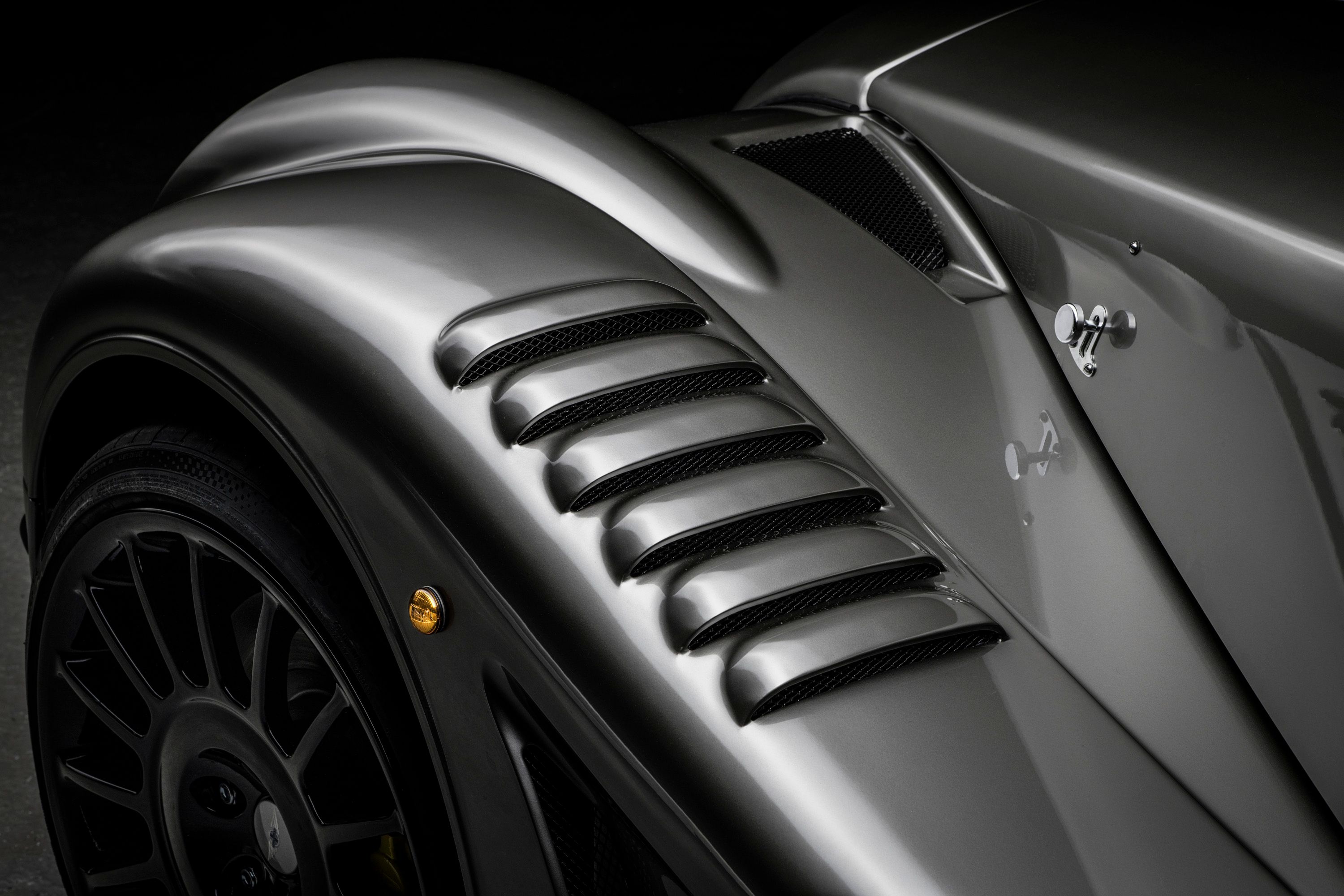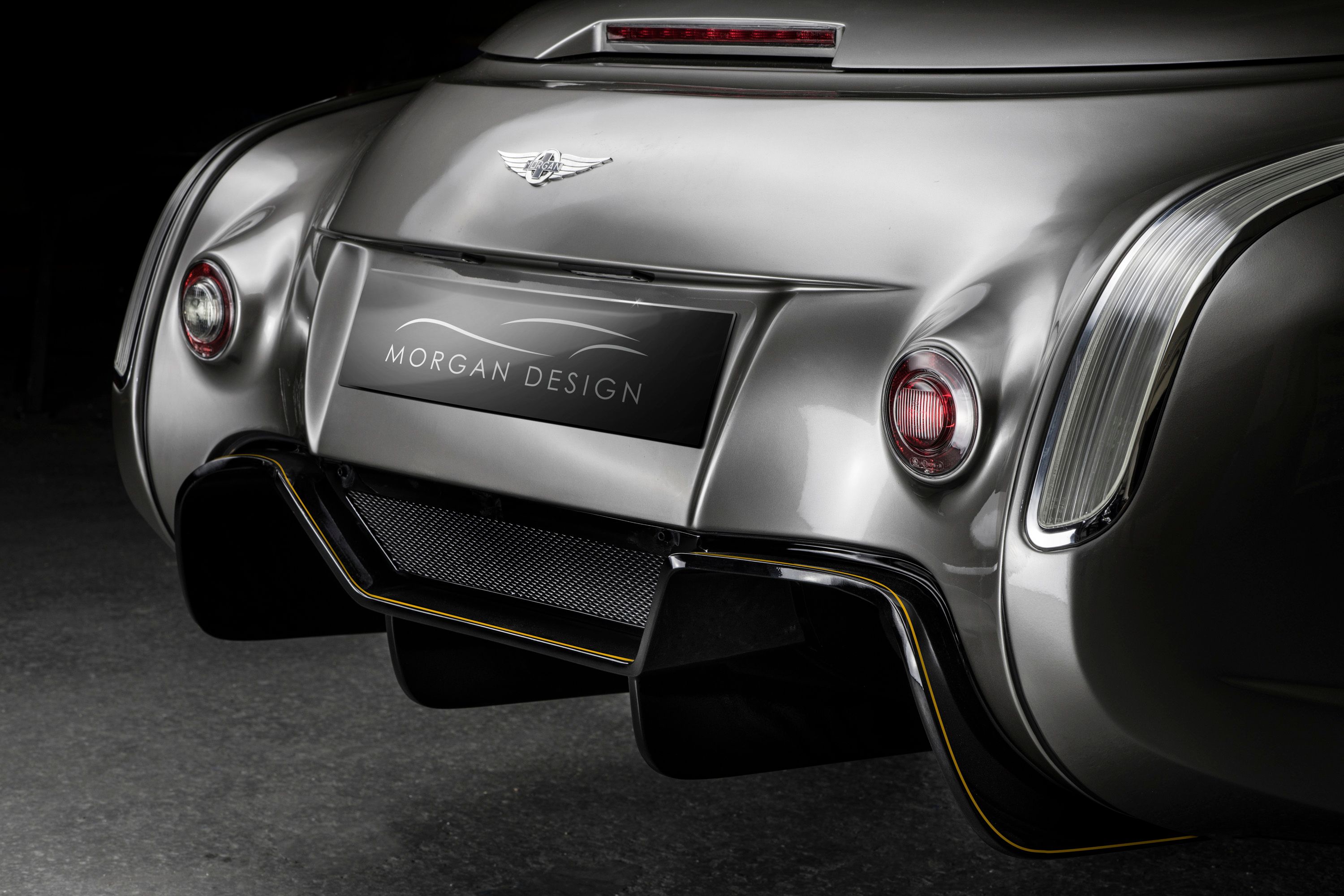Introduced in 2001, the Aero 8 marked the beginning of a new era for Morgan. Not only was it the first new design since 1948, but the Aero 8 was also the company’s first vehicle to use an aluminum chassis and frame instead of its traditional wooden body tun and steel chassis combo. It was kept in production until 2010, when Morgan launched the AeroMax coupe and the SuperSports Targa, and revived in 2015 with mild updates. Come 2018, and the Aero 8 is getting the ax again, but this time around production will end with a more extreme iteration that’s called the Aero GT. The big unveiling took place at the 2018 Geneva Motor Show, and only a handful will be built before the Aero 8 goes into the history books for good.
The Aero GT is described as a "gloves off" model, and Morgan says it was developed using the lessons learned from the company’s GT3 racing victories. Yes, it's Morgan’s most extreme road-going model to date. The Aero GT is far from new though, as it was conceived during the development of the 2015 Morgan Aero 8. Morgan doesn’t say whether it wanted to shelve the project or not at first, but the Aero GT never saw the light of day until now. With production of the Aero 8 slated to come to an end this year, Morgan will close the production line with eight examples of the Aero GT. Let’s see what this new sports car has to offer in the review below.
Continue reading to learn more about the Aero GT.
2019 Morgan Aero GT
- Make: Array
- Model: 2019 Morgan Aero GT
- Engine/Motor: V8
- Horsepower: 367
- Torque: 370
- [do not use] Vehicle Model: Array
Morgan Aero GT Exterior
Unlike other limited-edition models from Morgan, the Aero GT is more than just a regular Aero with mild improvements. The British firm actually redesigned some body panels for this model, which seems heavily based on the race-spec Aero GT3 that Morgan introduced in 2009. The Aero GT is the closest road-legal thing to the Aero GT3 and it only needs a livery to become a full-fledged race car.
Up front, Morgan restyled both the wings and the louvers, giving the car a more aggressive look. The wheelarches are a bit wider and have a sculpted design toward the edges, while the louvers on top are bigger. A big vent was carved into the lower front fenders, like seen on the GT3 race car. New canards were added to the lower bumper, while the front end was lowered closer to the ground. All these changes reduce low pressure on the sides and add frontal downforce.
Around back, the heavily sculpted and gorgeous fenders of the Aero 8 were revised to adopt cooling vents and more aggressive wheelarches. The classic bumper was replaced by the most aggressive diffuser ever seen on a Morgan with four independent wings and a trapezoidal grille in the middle. This element alone reduces air pressure from beneath the vehicle, which increases rear-end downforce.
The GT also has a carbon-fiber hard-top, a unique feature for the Aero lineup. A tribute to 1960s race cars, the carbon roof features a rearward facing vent that reminds me of coupes seen at Le Mans in the same era. It would have been cool for Morgan to offer optional yellow lenses for the headlamps and taillights, just to complete the Le Mans look. The exterior is rounded off by "GT" badges made by a British jeweler and yellow accents on the diffuser and side skirts, as well as a yellow stripe across the engine hood.
Morgan Aero GT Interior
Morgan didn't have much to say about the interior and, worst of all, did not release any photos of the cabin, but we do know that it’s hand-finished with a series of painted stitching and pinstripe accents and available with an extended choice of wood options. Given that each model will be tailored to each customer, all eight units should be unique inside the cabin.
But beyond these extra niceties, it should remain unchanged compared to the Aero 8. The dashboard will still have the classy design with conventional instrument gauges and several buttons and switches on the center stack, and even the wood trim on the top of the dash and door panels.
The center console is also covered in wood on the standard model and it appears it's the same in the Aero GT. I was originally hoping that Morgan might opt to replace it with aluminum or even carbon-fiber in order to save weight, but with all those fancy wood options available, customers will be able to see where their hard-earned cash goes into. The sports-spec seats and the door panels are wrapped in fine leather for a premium look.
Morgan Aero GT Drivetrain
While the exterior and interior gained some special bits, the drivetrain remains mostly unchanged, as the Aero GT draws its juice from the same 4.8-liter V-8 engine that Morgan has been using in the Aero since day one. The unit in question is actually BMW’s N62 mill, which was introduced in 2001. The final 4.8-liter iteration, called the N62B48, was first launched in 2003 and used in models such as the BMW X5, 5 Series, 6 Series, and the Wiesmann GT MF4. BMW stopped using it in 2010, which makes Morgan the last carmaker to still offer it in its vehicle. This makes the Aero GT the last production car to get its oomph from this unit and extends the engine's life-cycle to a whopping 15 years.
The output of tne V-8 remains unchanged in the Aero GT, with the naturally aspirated mill producing the same 367 horsepower and 370 pound-feet of torque. The sprint to 62 mph takes 4.5 seconds, which makes it just as quick as the standard model. Top speed is also identical at 170 mph, as are the fuel economy ratings of 16 mpg city and 32 mpg highway (on the British cycle). The engine mates to the same six-speed manual transmission, also borrowed from BMW, but unlike the Aero 8, there's no option for an automatic gearbox.
Granted, it’s a bit disappointing that there are no performance gains with the "GT" badge, but it’s understandable that Morgan doesn’t want to alter the engine for a very limited-edition run. Morgan’s latest adjustable suspension gives the Aero GT sporty dynamics, so there is a slight different compared to the Aero 8, especially given the improved aerodynamics.
Morgan Aero GT Prices
No work on pricing yet, but with the Aero 8 priced at more than £100,000, the Aero GT should fetch in excess of £150,000 before options. It doesn't matter that much anyway, as all eight Aero GT models are already accounted for by existing Morgan customers. Each example will be individually tailored to its owner so we should see a few interesting vehicles leave the factory. Hopefully Morgan will showcase all of them with photos and information.
Morgan Aero GT Competition
David Brown Automotive Speedback GT
When it comes to modern cars with retro styling and V-8 power, there aren’t many choices to consider. Many automakers stay away from retro styling for performance cars, while others have downsized their engines and use mostly V-6 or four-cylinder powerplants. An exception from this rule is David Brown Automotive, a company founded in 2013 by David Brown, a British businessman that has nothing to do with Sir David Brown, the former owner of Aston Martin. The brand’s first model, the Speedback GT, was developed in a similar way to the Morgan Aero, blending a retro-inspired design with modern underpinnings.
Built on the Jaguar XK’s alloy platform, it takes cues from both the Jaguar XKR and Aston Martin DB5, and it’s fitted with luxury features and a supercharged, 5.0-liter V-8. The mill is rated at 503 ponies and 461 pound-feet of torque and mates to a six-speed automatic transmission, enabling the coupe to hit 62 mph from a standing start in 4.6 seconds. Top speed is limited to 155 mph. The whole car is built by hand while the aluminum panels are hand-rolled on an English wheel, so it’s as authentic as they get.
At the 2018 Geneva Motor Show, DBA also launched a more track-focused version, called the Silverstone Edition. This model has sportier, unique features inside and out and a more powerful version of the supercharged V-8. Output is now rated at 601 horsepower and 565 pound-feet of torque, which decreases the sprint time to 62 mph to only 4.2 seconds. The only drawback here is that the Speedback GT costs a whopping £520,000 before taxes and options, while the Silverstone Edition fetches £620,000.
Read our full story on the 2015 David Brown Automotive Speedback GT.
Conclusion
Needless to say, the Morgan Aero 8 isn't your typical sports car. The "love it or hate it" design and the very limited production run keep it in a niche of its own, while the expensive sticker turns it into more of an occasional toy than a daily driver. The Aero GT model add a race-inspired twist to all of the above to mark the end of the nameplate. The unique character of this car makes it a bit sad to see it go away, but I must admit that it looks a bit dated now that it's already 18 years old. At the same time, it's a bit ironic that Morgan is discontinuing its more recent model, but a new-generation Aero should be just around the corner.
References
Read our full review on the 2015 Morgan Aero 8.
Read more Morgan news.
Read more Geneva Motor Show news.

